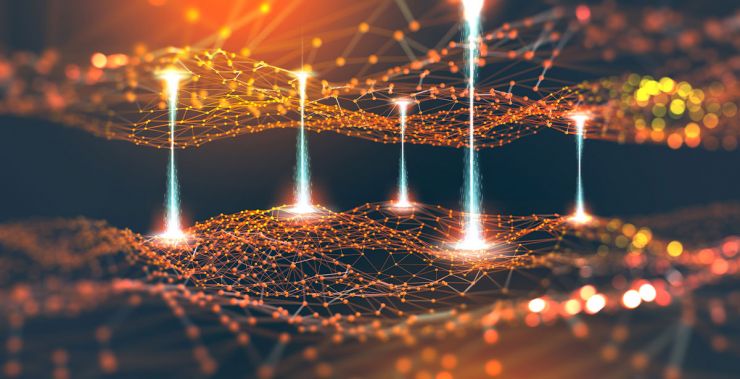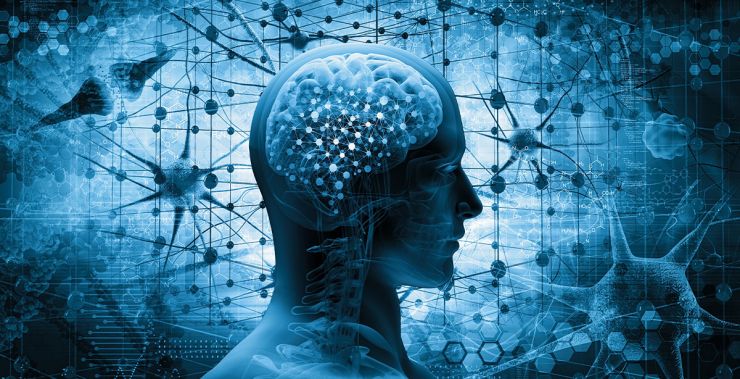
Exploring organizational theory and leadership through the framework of complexity and neural sciences (part 5)
“The essence of life is statistical improbability on a colossal scale. ” – Richard Dawkins
In the following blog post we’ll take a closer look regarding the field of neuroscience. Neuroscience is an umbrella term and can be used to support efficacy and potentially guide techniques for any school of therapy. I believe it does make a difference if the practitioner has a good fund of knowledge and knows how to apply it. As a general remark and a word of caution you can stick the word neuro in front of anything, and far too often it simply lends a sense of credibility to material. Antonio Damasio, a Portuguese-American neuroscientist, has been a prominent figure behind modern neurobiology, with his research focusing especially on the neural systems which underlie emotion, decision-making, memory, language and consciousness (Damasio, 2003, 2005, 2010).
Complexity is an integral part of the study of the human mind, also from a neuroscience perspective. In the neural networks of the brain, the action is both causal and hermeneutic, there are always causal relationships but the neural networks are interconnected and “talk” to each other. The function of the brain can and must be understood not only as causality but also as an interaction in the complex circuits of neural networks. These neural networks seem to understand each other and know how to read each other's signals. The brain coordinates and is affected by bodily functions, and it integrates the information about the outside world conveyed by our senses – it is the most central player in the physiology of the whole body. Neuroscience is an interdisciplinary field that studies the brain and the entire nervous system at different levels of organization, from genes and molecules to nerve cells and networks; and beyond. Human is in inseparable bond with the environment through her body and this loop of action (biophysical and synaptic processes of sensory-motor coupling) is present in all activities.

Embodied cognition is also supported by recent findings regarding the mirror neuron system in the human brain, which demonstrates that understanding other people’s movements and feelings involves activating the viewer’s own corresponding brain networks (Lehtonen, 2011). Our bodily experience thus provides a pre-reflective fund of meaning that makes it possible for us to think abstractly and to carry out all forms of meaningful human symbolic interaction, expression, and communication (Johnson, 2008). This highly intersubjective and social view is at the center of the field of enactive cognitive science. Enactive cognitive science denies the importance of internal representations (mental models) and information processing models. This means that a living organism builds knowledge and meanings in a process in which the organism’s own bodily activity intertwines with the environment. The subject and the object are thus formed in parallel, whereas the interaction is molding and producing each other. Another way to express this is that cognition is action or in active doing. The resonance with the foundation of symbolic interactionism (Mead, 1934), and its view that the social world is created through interaction between individuals and their environment is remarkable, now getting psychobiological empirical evidence – such as discovery of mirror neurons – with the support of neuroscientific research.
This process begins from the infantile core self, the sensory-motor stage with its biological and behavioral gesture-response patterns, and continues through more sophisticated forms of psychological interaction towards verbal-symbolic communication, and to the formation of the social self. Conceiving the rise of the body ego from interactions that are largely transmitted by physical contact, the surfaces of the body (the skin and the mucosa) turn into a primal scene where psychological development of the early self can take place (Lehtonen, 2011). By gaining an active share in the interactions, the infant gradually becomes the owner of her/his emergent self (Damasio, 2002; Trevarthen, 2003, Lehtonen, 2011). And within its surface-like scenic structure, the skin also functions as a site of physical and symbolic communication (Lehtonen, 2011). From Mead’s perspective, the social act is the primary, and through social experience gives rise to self-image, consciousness and identity. In a plural form social action constitutes so called ‘generalized other’ as synthesis of attitudes and expectations cumulating from heritage of social experiences. Mead sees this internal gesture-response dialogue, taking attitudes of generalized others towards her/himself (I/me dynamics), giving birth to individuals.

Also, we can experience strong alignment with process sociology (Elias, 1939, 1965, 1987) which considers people in the plural – human beings who are interdependent with each other in a variety of ways, and whose lives evolve in and are significantly shaped by the social figurations they form together as well as that the development of human knowledge takes place within human figurations. Here, from organizational behavior and leadership stand point of view, it’s also important to point out Elias’s notion of inclusion and exclusion processes, as group dynamical sources of power differentials. Belonging to a group (i.e. family, tribe, team or organization) is vitally important for us as throughout social humans. Inclusion to a group generates a sense of cohesion and integration, as opposed to acts of exclusion and related emotions of deficiency, emptiness and primal fear against the social isolation (belonging to a group enables genetic and cultural evolution). Whenever we meet someone, we are implicitly aware of her resemblance to us, because we literally embody it. The general underlying mechanism - bodily imitation - contributes to our ability to understand and share the meaning of actions, intentions, emotions, and emotions with others, thus creating a foundation for our identification and connection with others.
Brain activity and cognition is no further simply “Terra incognita”. The evolution of research methods combined with the intersubjective and throughout social view of humans as intersubjective networked creatures, has created a new scientific paradigm in which brain biological activity, methodological technology, and the natural networking of social life are seen in an inseparable to each other, and where the role of brain is essential understanding human’s socially networked activity and wise verse. The human brain consists of about 100 billion neurons and 100 trillion connections between those neurons. Genes supervise the structural development of the brain, but only when they have first been activated by epigenetic mechanisms and put to work in making the neurophysiological pathways functional (Lehtonen, 2011). Unless actively taken into use and reinforced by practice, neural structures cannot accomplish their constitutive role in the development of the mind (Lehtonen, 2011).

Another highly interesting aspect is viewing brains as complex adaptive systems (CAS). Each neuron is relatively simple (compared to the whole brain) and, again, there is no central control. Somehow the huge ensemble of neurons and connections gives rise to the complex behaviors we call “cognition” or “intelligence” or even “creativity”. This means that i.e. visual perception and cognition are emergent properties which cannot be inferred by an external observer, even on the basis of complete description of the elements (such as neurons, synapses and neural networks) involved in the interactions and of the rules governing the interaction. We do not know with certainty how the experiential unity of the mind is created even at the level of individual sensory perceptions. How does the sense of sight produce the complete and coherent picture, even though in the brain it consists of many sub-functions? This question goes by the name of the binding problem. Various solutions have been proposed, most of which are based on the synchronized excitation of cortical neurons at a frequency of 30–100 Hz (Lehtonen, 2011).
Another important aspect relates to brain plasticity. Brain plasticity, or neural plasticity, is the ability of the brain to undergo structural or physiological change which has significant implications for healthy development, learning, memory, and i.e. recovery of cognitive functions caused by brain damage. The environment modifies the brain through epigenetic mechanisms, i.e. activating or suppressing genes that control the brain, and on the other hand, internal factors in the brain and body such as mood, sleep, physical condition, etc. affect the ability to absorb and learn new things. Both directions have been described by brain scientist and academician Riitta Hari as a sensorimotor loop (Hari et al., 2015). The brain is constantly interacting with the environment and changing with it all the time. Thus, there is no fundamental contradiction between the two. Pain and anxiety are almost always encountered when a person has to change. Its acceptance and endurance are important and gives the body and brain the opportunity to embrace change. If the pain is controlled or medicated, the development may not occur. In the leadership arena, that is an essential thing to be understood; to be able to support a person experiencing the pain of change and learning, i.e. not to steer away from the pain but to support its endurance and the search for new solutions and perspectives.

I am arguing that in many contemporary theoretical frameworks, leadership is perceived as too positive and optimistic considering the idealized notion of change and transformation as an example (i.e. Change Management). Obstacles, situational and personal factors and human resistance to change should also be taken into account. From a neurobiological perspective we see the complexity of ‘brain in action’. I believe this understanding sheds light to certain highly idealized notions regarding organizational behavior and change management behind current paradigms of leadership and organizational theories. Besides this, in terms of explaining their own behavior and the way their own minds work I do find it helpful for people if they can grasp some of the concepts of neuroscience to have better executive function. In this regard I find a little bit of neuroscience can go a long way such as explaining how basic neural networks function to people which gives them perhaps more of a sense that they can influence their own process. Moreover, I sense there’s a possibility for more fundamental transformation from idealized deductive and bounded rationality towards inductive reasoning. As Stacey crystallizes it: What I think is required to move away from the magico-mythical thinking, dressed up in the rational sounding jargon of the dominant management discourse, in an approach to thinking about our lives in organizations in a way that involves taking our ordinary, everyday experience seriously (Stacey, 2010).
Considering and exploring the process of learning, enabling/leading to behavioral change from neurobiological stand point, requiring creation of new neural circuits (by leveraging neural plasticity) by rewiring and strengthening some synaptic connections, creating new synapses, and on the other hand weakening and eliminating other connections. We come to understanding this as an intensive and cognitively and emotionally painful process. How does this influence our perspective to the feasibility of behavioral change programs and idealized notions of change and transformational leadership (i.e. driving a culture of companywide entrepreneurship)?
BlackSmith Consulting Oy, Juho Partanen
Chairman of the Board
+358 40 153 5606
juho.partanen@blacksmithconsulting.fi


